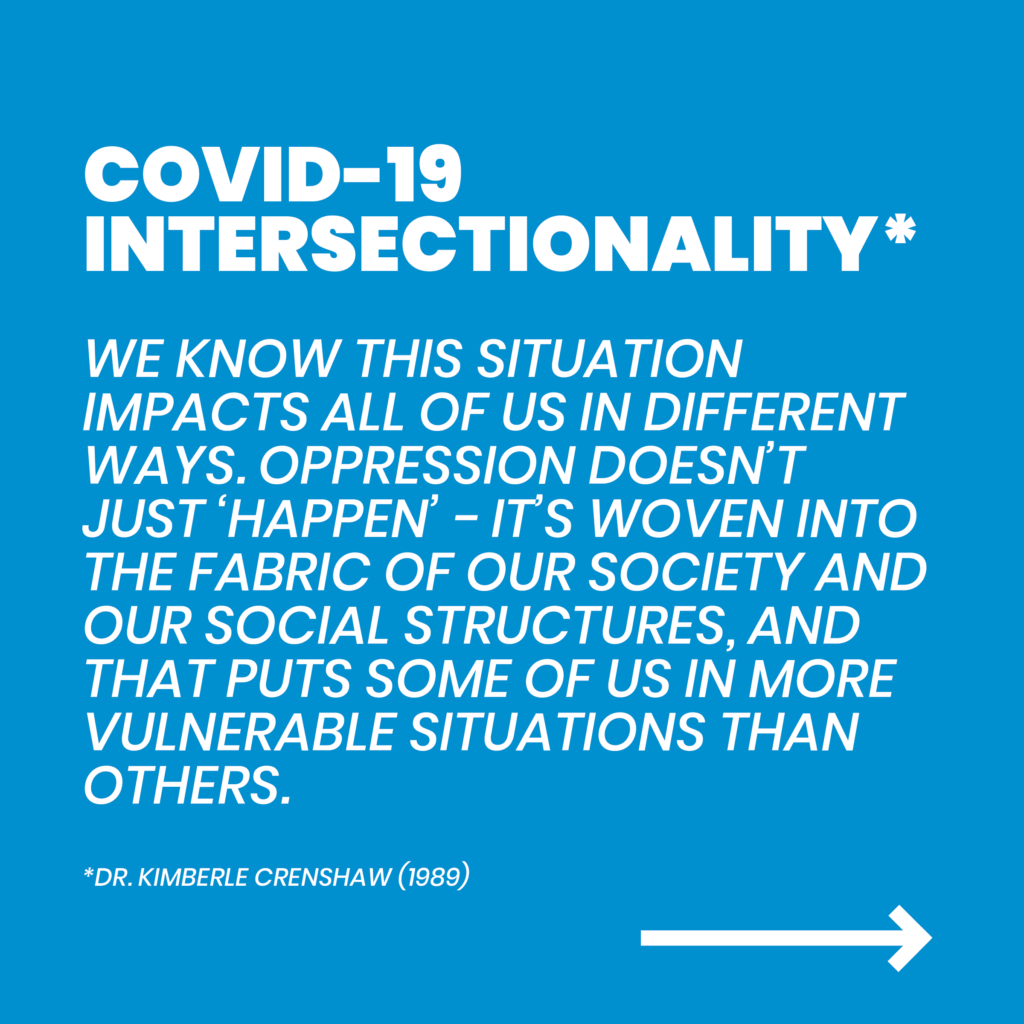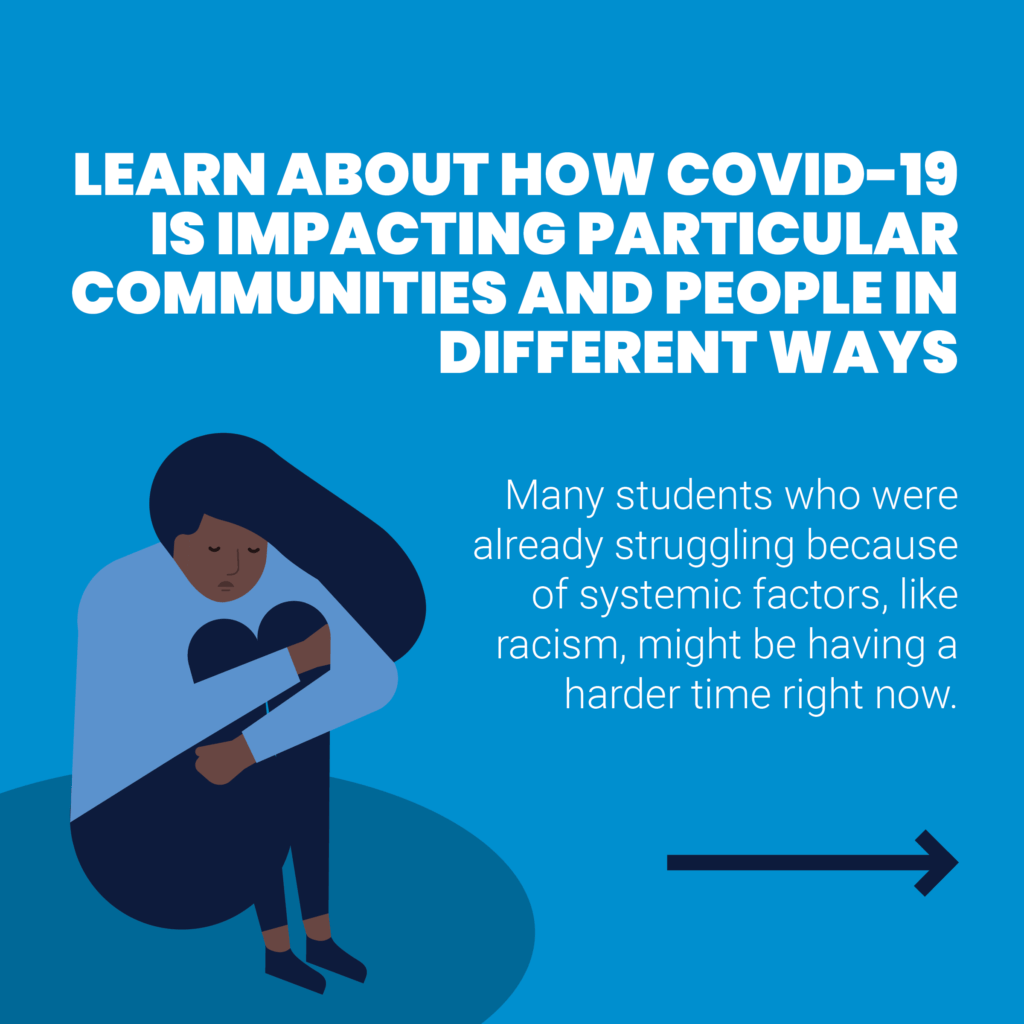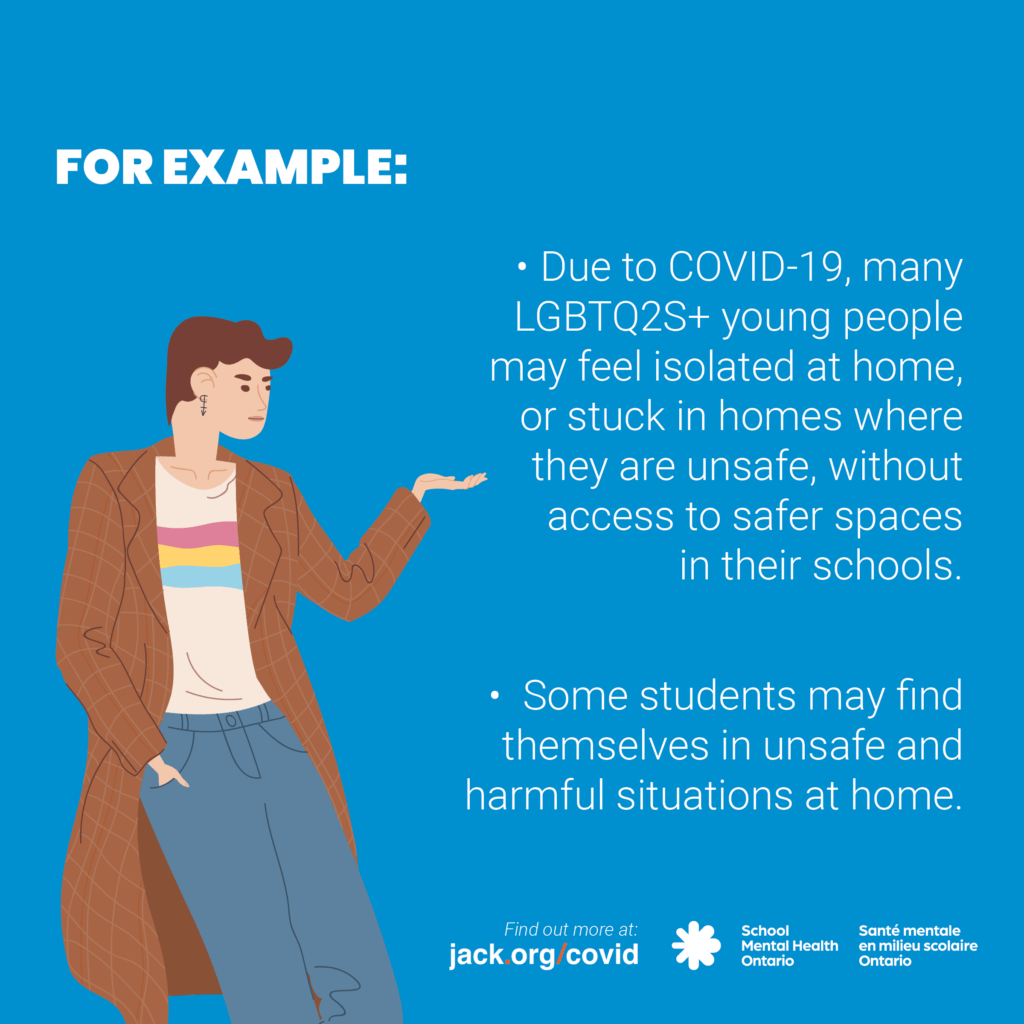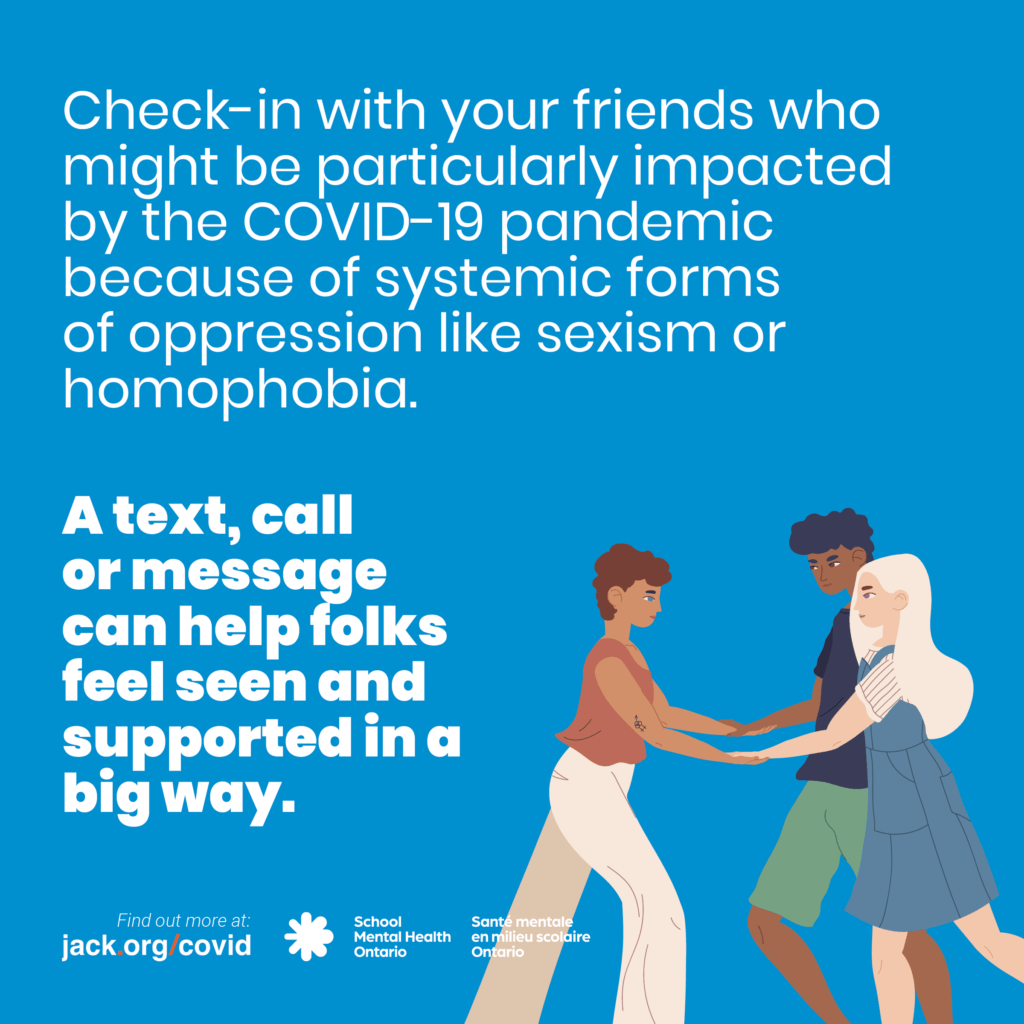Equity and Allyship Social Media Bundles
With the help of Ontario secondary school students, we’ve put together social media bundles that include various youth-friendly graphics. The graphics are meant to build students’ awareness and understanding of:
- some of the different equity issues related to the pandemic
- coping tips for students impacted by systems of oppression and discrimination
- how to be an ally
Equity
Download the complete bundle (zip file)
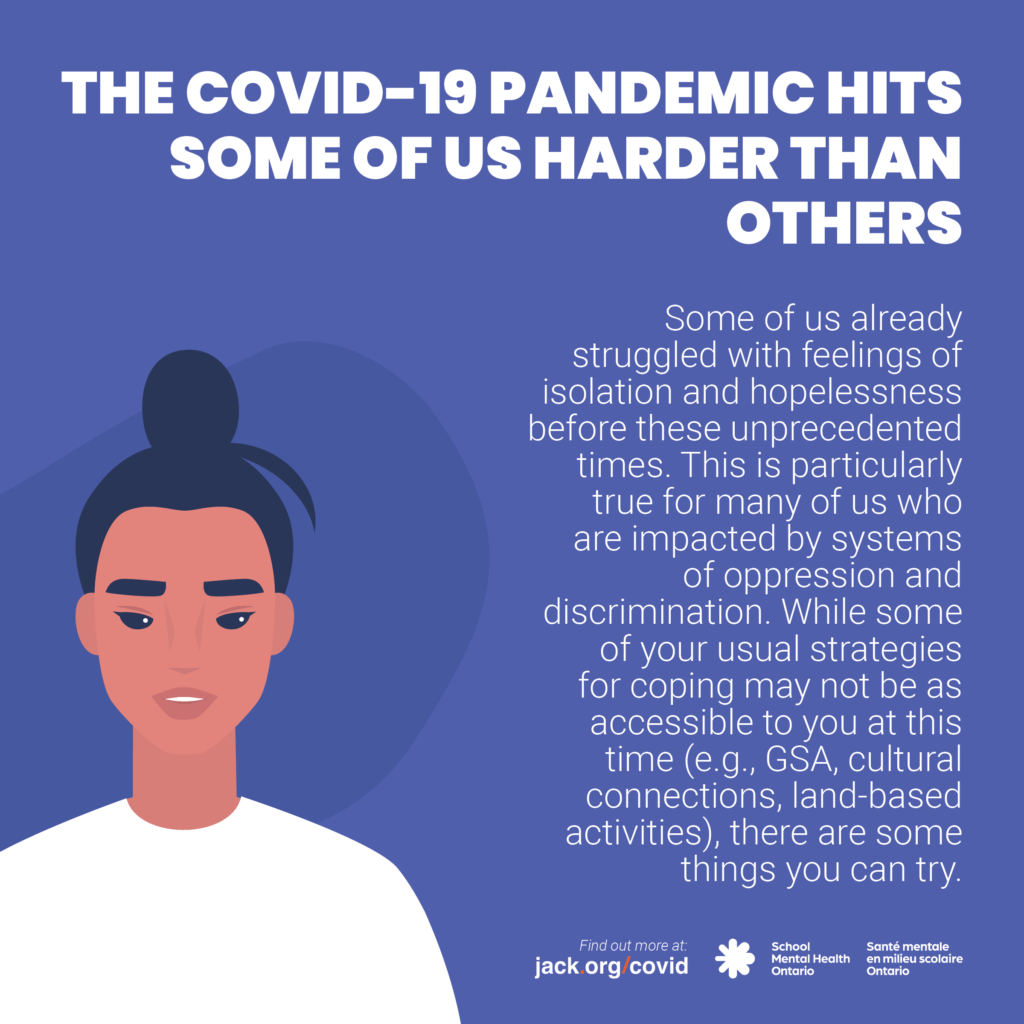
The COVID-19 pandemic hits some of us harder than others.
Some of us already struggled with feelings of isolation and hopelessness before these unprecedented times. This is particularly true for many of us who are impacted by systems of oppression and discrimination. While some of your usual strategies for coping may not be as accessible to you at this time (e.g., GSA, cultural connections, land-based activities), there are some things you can try.
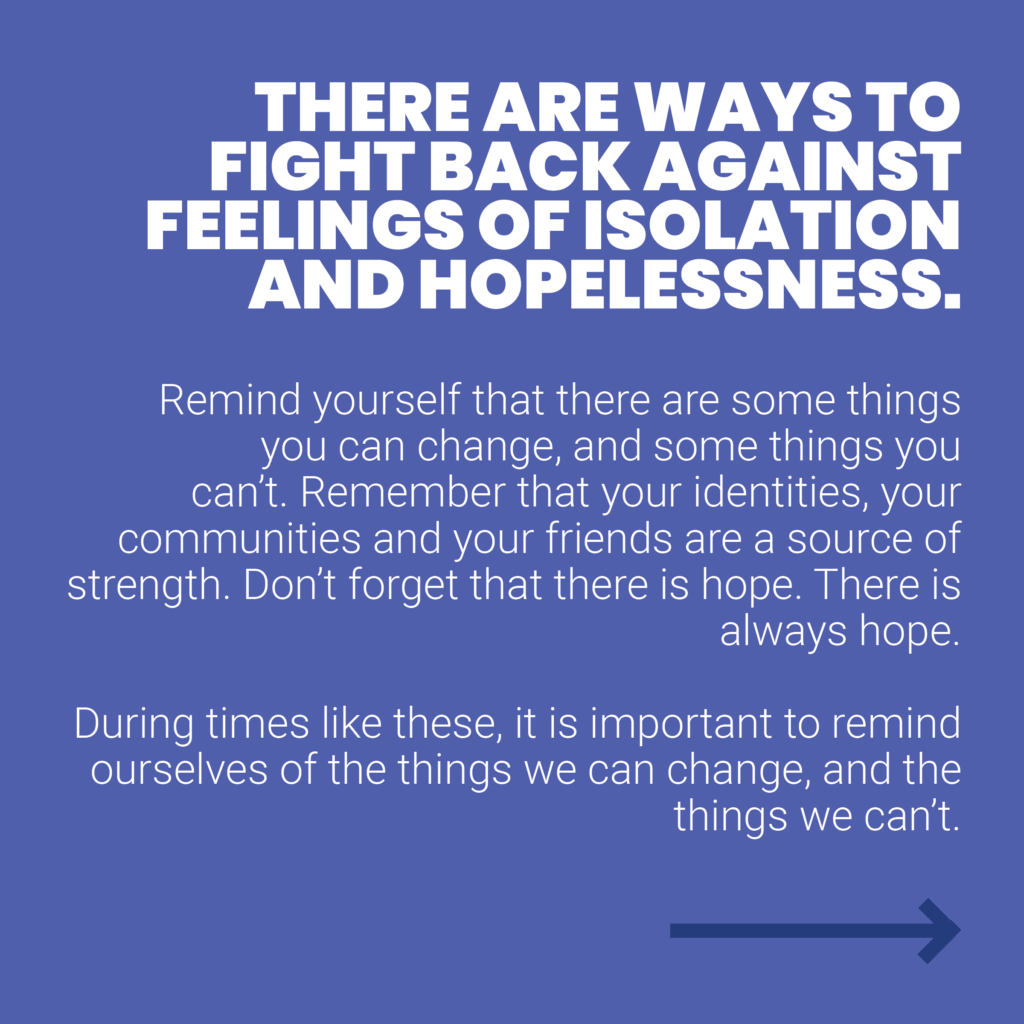
There are ways to fight back against feelings of isolation and hopelessness.
Remind yourself that there are some things you can change, and some things you can’t. Remember that your identities, your communities and your friends are a source of strength. Don’t forget that there is hope. There is always hope.
During times like these, it is important to remind ourselves of the things we can change, and the things we can’t
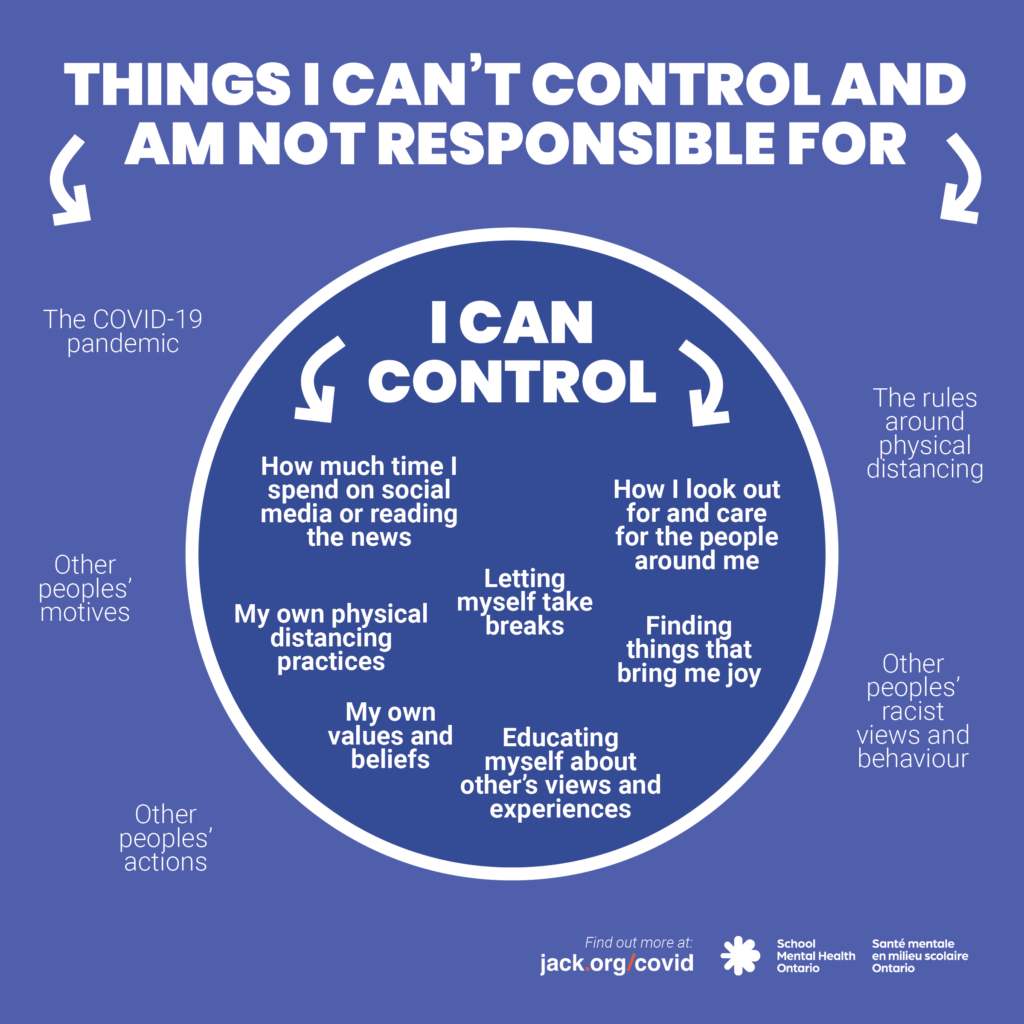
The image contains a circle. Things I can control are written inside of the circle. This list includes:
how much time I spend on social media or reading the news;
how I look out for and care for the people around me;
letting myself take breaks;
my own physical distancing practices;
finding things that bring me joy;
my own values and beliefs;
educating myself about other’s views and experiences.
Outside of the circle, things I can’t control and are not responsible for are listed. This list includes:
The COVID-19 pandemic;
The rules around physical distancing; Other peoples’ motives; Other peoples’ racist views and behaviour;
Other peoples’ actions.
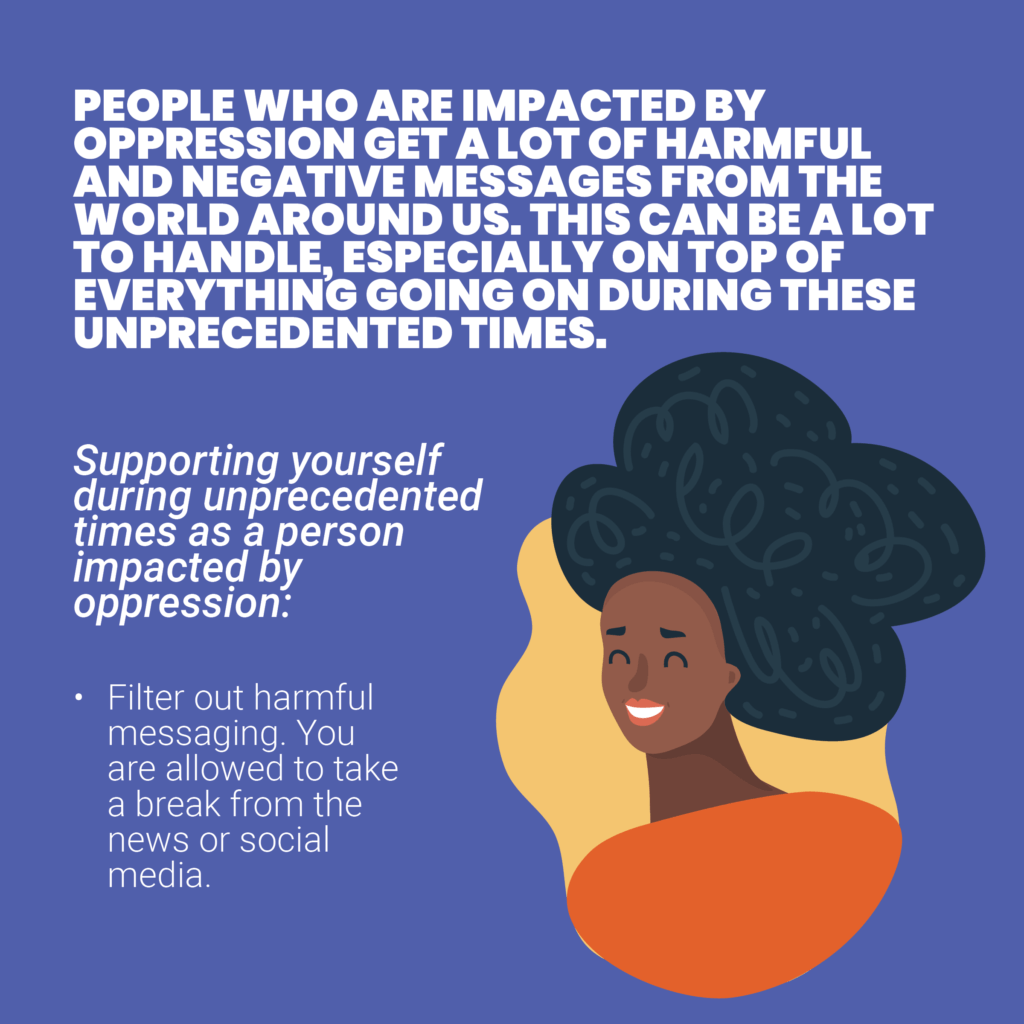
People who are impacted by oppression get a lot of harmful and negative messages from the world around us. This can be a lot to handle, especially on top of everything going on during these unprecedented times.
Supporting yourself during unprecedented times as a person impacted by oppression: Filter out harmful messaging. You are allowed to take a break from the news or social media.
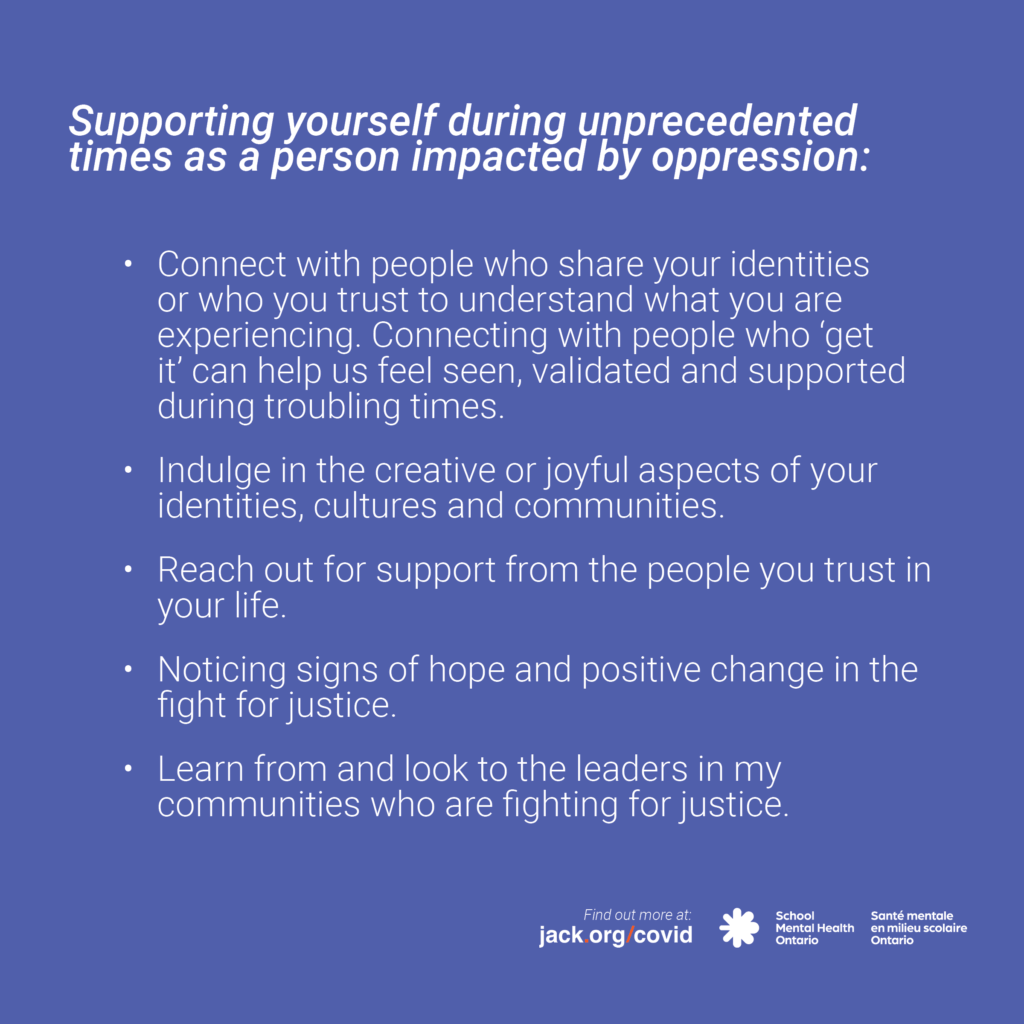
Supporting yourself during unprecedented times as a person impacted by oppression:
Connect with people who share your identities or who you trust to understand what you are experiencing. Connecting with people who ‘get it’ can help us feel seen, validated and supported during troubling times.
Indulge in the creative or joyful aspects of your identities, cultures and communities. Reach out for support from the people you trust in your life.
Noticing signs of hope and positive change in the fight for justice.
Learn from and look to the leaders in my communities who are fighting for justice
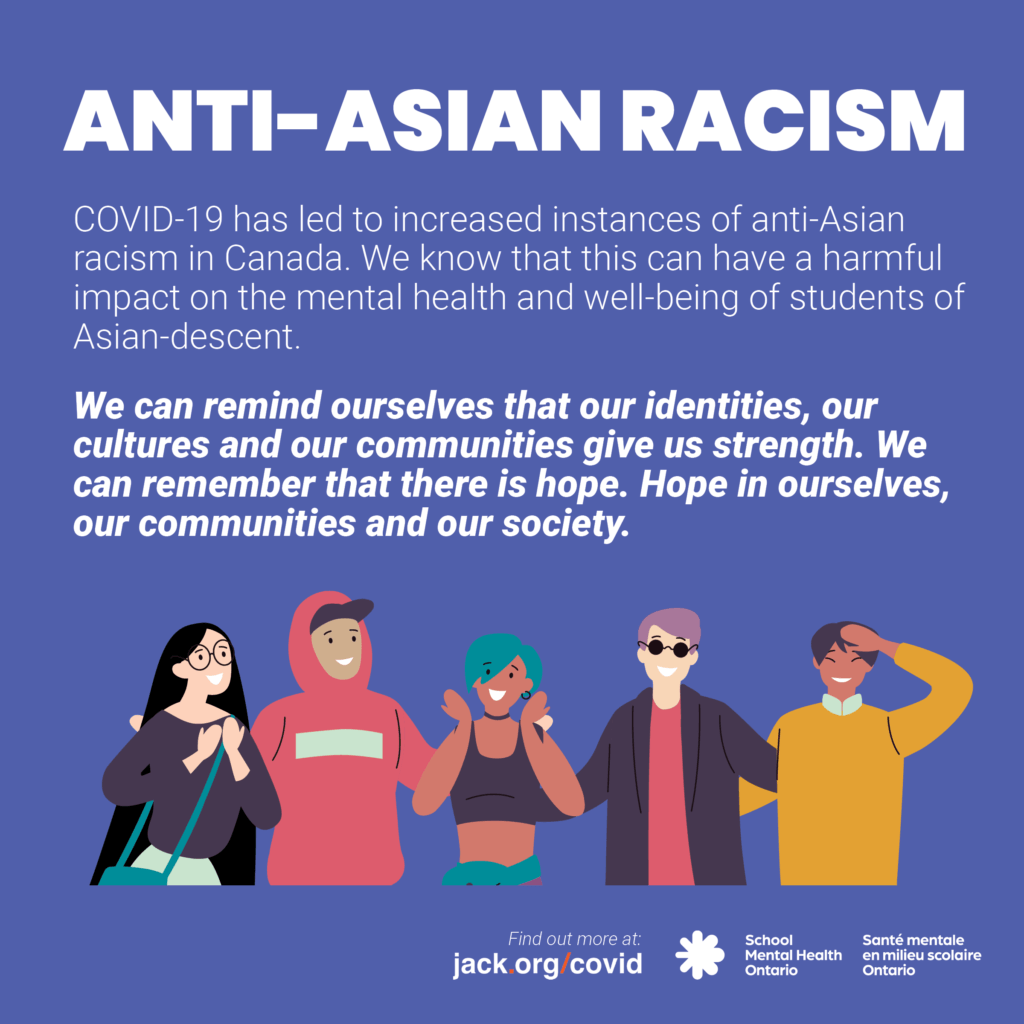
Anti-Asian racism
COVID-19 has led to increased instances of anti-Asian racism in Canada. We know that this can have a harmful impact on the mental health and well-being of students of Asian-descent.
We can remind ourselves that our identities, our cultures, and our communities give us strength. We can remember that there is hope. Hope in ourselves, our communities and our society.
Allyship
Download the complete bundle (zip file)
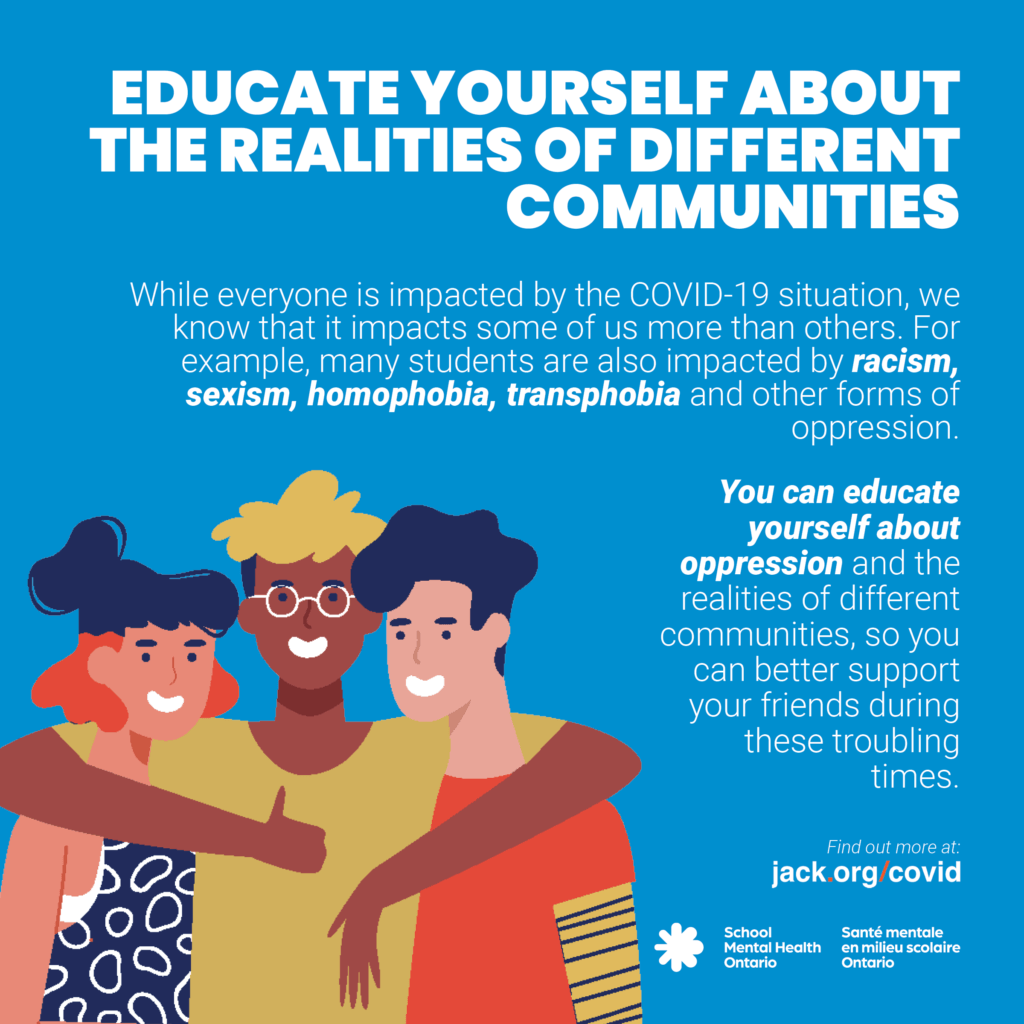
Educate yourself about the realities of different communities.
While everyone is impacted by the COVID-19 situation, we know that it impacts some of us more than others. For example, many students are also impacted by racism, sexism, homophobia, transphobia and other forms of oppression.
You can educate yourself about oppression and the realities of different communities, so you can better support your friends during these troubling times.
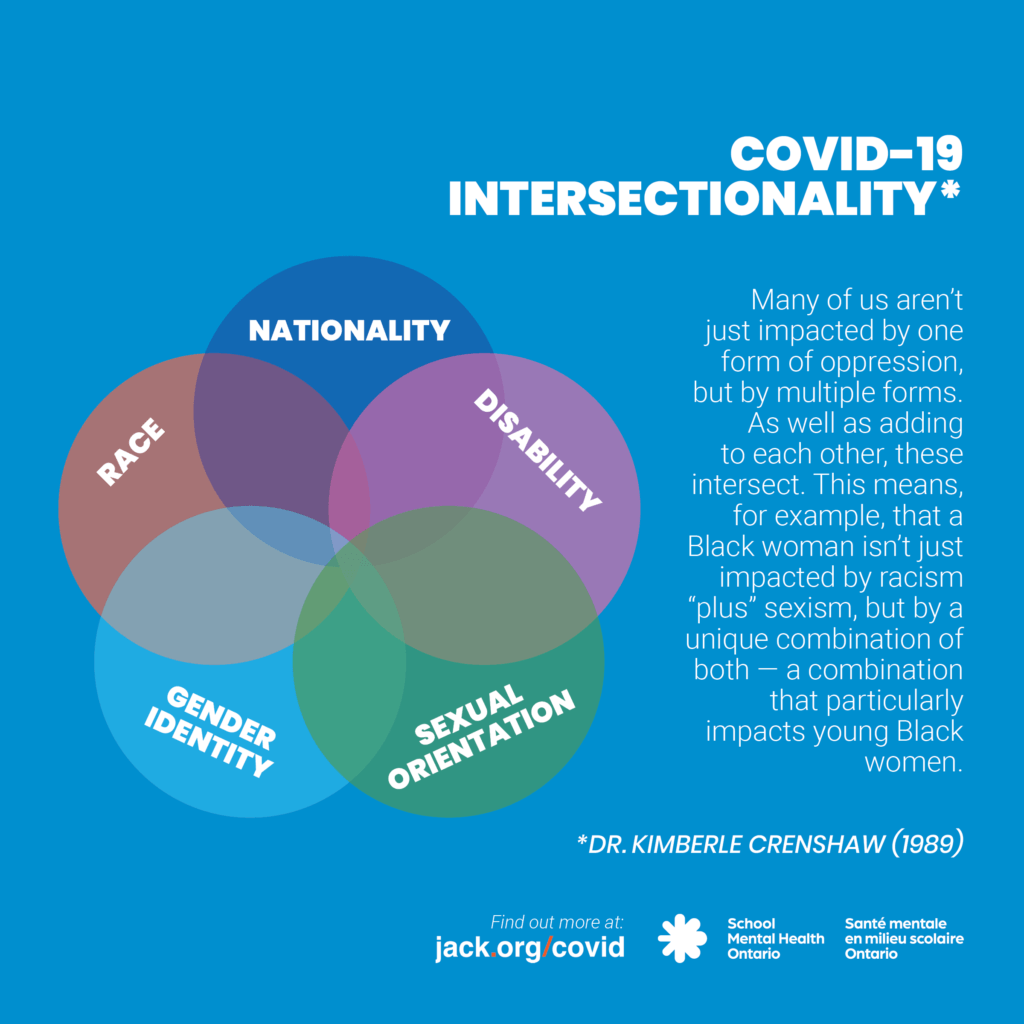
COVID-19 Intersectionality
Many of us aren’t just impacted by one form of oppression, but by multiple. These don’t just ‘add up’, they intersect. What that means is that, for example, a Black woman isn’t just impacted by racism “plus” sexism, but by a unique combination of both that particularly negatively impacts Black women. (reference Dr. Kimberle Crenshaw, 1989)
The image contains a Venn diagram; a diagram of five overlapping circles. Each of the circles represents one of the following: nationality, disability, sexual orientation, gender identity, or race. The overlapping of these circles represents the unique combinations of these factors that are present in people’s lives.
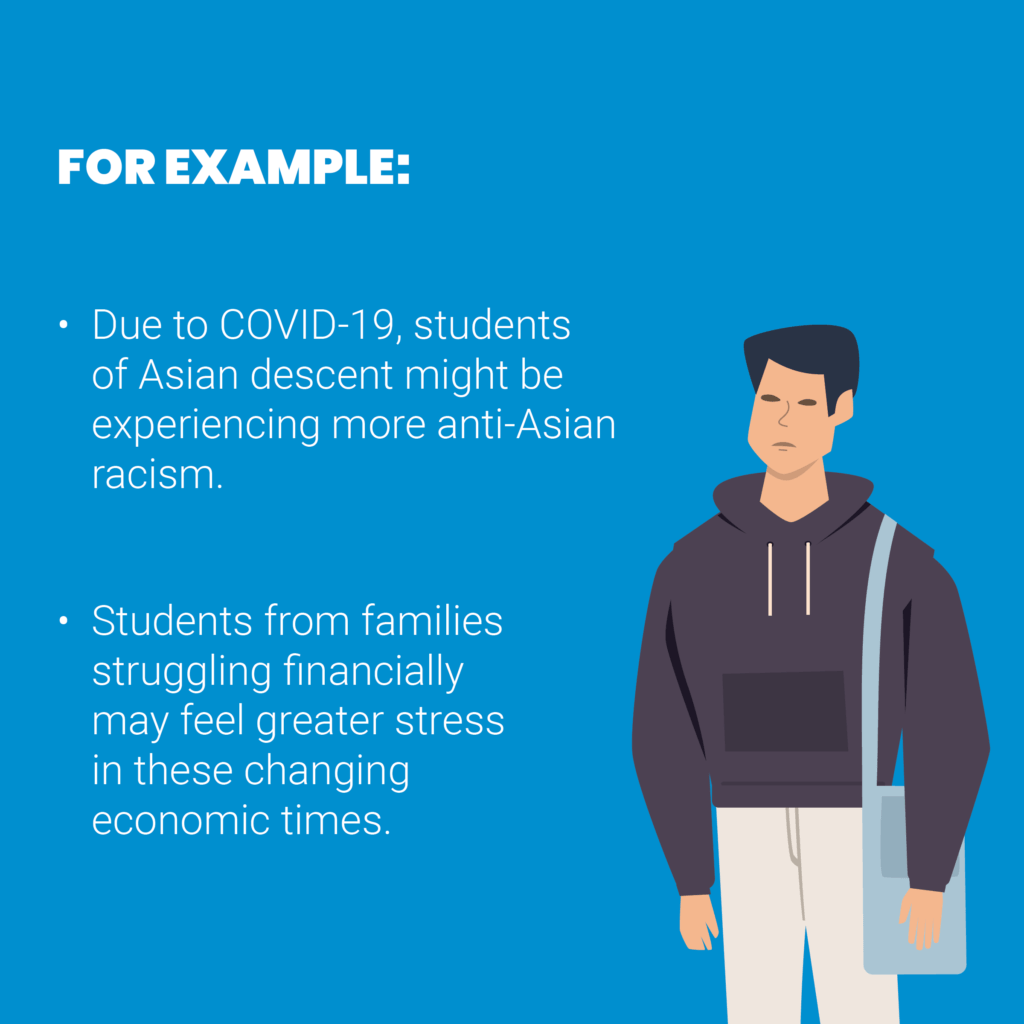
For example:
Due to COVID-19, students of Asian descent might be experiencing more anti-Asian racism.
Students from families struggling financially may feel greater stress in these changing economic times.

